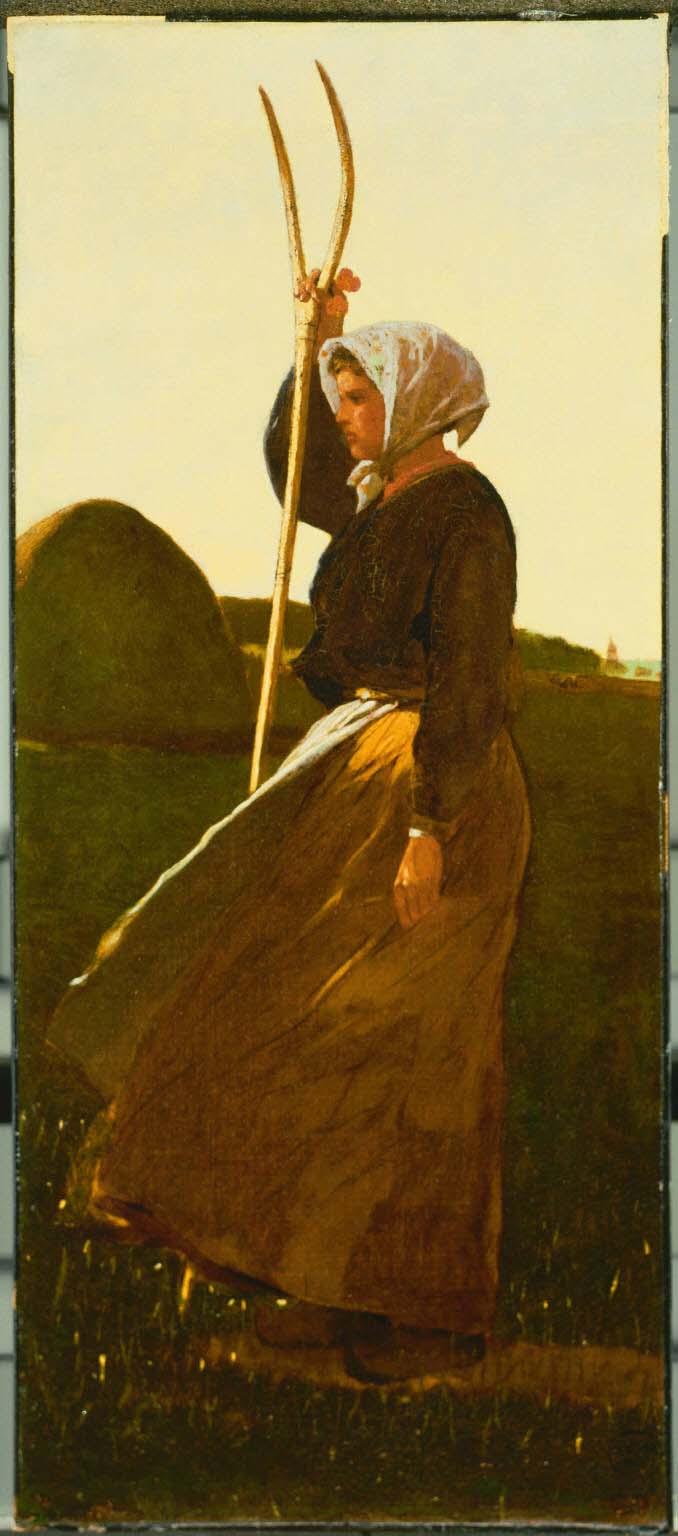Girl with Pitchfork
Winslow Homer ( 1867 )

Winslow Homer painted Girl with Pitchfork at the end of his first trip to France. The painting is an early example of the theme of heroic agrarian laborer to which Homer returned intermittently in prints and paintings in the ensuing years. The painting was likely created in Picardy, France, in the village of Cernay-la-Ville northeast of Paris. The area’s picturesque landscape and peasant inhabitants made it a popular destination for artists, and a small colony had grown up there by the time Homer visited.
During Homer’s time in France he attended the International Exposition of 1867, also known as the Universal Exposition of Art and Industry, where two of his paintings were on display. Homer had the opportunity to see many works by the Barbizon School, and artists such as Jules Breton and Jean-Françoise Millet had an immediate impact on his paintings, including Girl with Pitchfork.
Homer had painted two similar images to Girl with Pitchfork before executing this painting in 1867. The economy with which he approached his composition in this version suggests that it was a distillation of the theme of laborer and land explored in the two earlier works. He narrowed the focus by painting a strong vertical format in which land, figure, and background are effectively merged onto one visual plane, as well as adjusting the light from fierce midday to lyrical twilight.
In the late 1940s, Phillips decided to augment his collection of Homers by purchasing this early work, which coincided with his increasing interest in Homer, reflected in several exhibitions and publications.